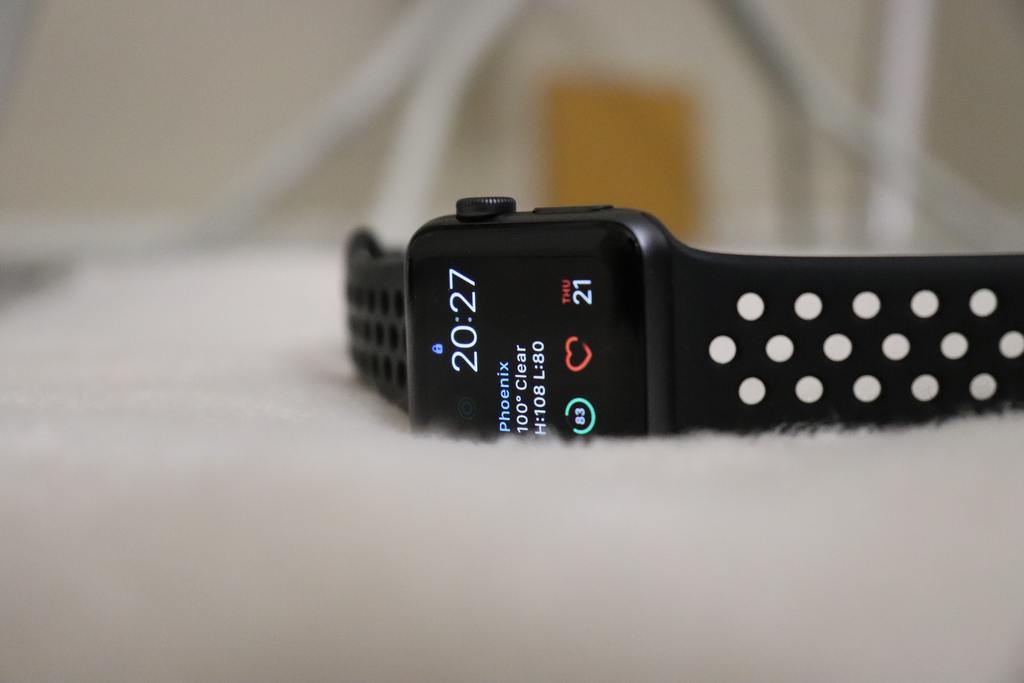 Motivation to exercise doesn’t just happen magically for most people. You have to use multiple strategies in order to get it and keep it. And one easy way to do that is to track your exercise progress. There are many ways you can do this and I suggest using as many of them as possible! More help equals more success.
Motivation to exercise doesn’t just happen magically for most people. You have to use multiple strategies in order to get it and keep it. And one easy way to do that is to track your exercise progress. There are many ways you can do this and I suggest using as many of them as possible! More help equals more success.
I’ve developed all kinds of strategies for motivation over the years because I don’t think just one is enough. Sometimes I get motivated by observing unhealthy people engaging in unhealthy habits. Other times I get motivated by reading about what really healthy people have accomplished.
But one of the best ways I’ve found to get motivated is to track my exercise progress. Numbers don’t lie! When you do this it gives you actual feedback to work with and small victories to inspire you to do more.
When I can see I’m making progress it gives me hope and inspiration that I will reach my goals. I’m a competitive person so I also like to challenge myself to beat my current level of activity or strength. And it might work for you too!
So here are my suggestions for some simple ways to track your exercise progress.
Pre-exercise measurements
One of the easiest ways to track your progress is to take some measurements before you start exercising. Weighing yourself is an obvious one if one of your goals is weight loss. But you should also measure your waist circumference and the size of your arms and thighs.
You don’t have to share that information with anyone so there’s no need to be embarrassed by your numbers. But this way you’ll know exactly how much you’ve lost in both weight and inches after working out for a couple of months. And it will give you something to brag about later!
It’s also a good idea to figure your BMI before starting to exercise. BMI stands for body mass index. For most people, it works really well at determining overall fat mass. BMI is a weight-to-height ratio that puts you in a category of underweight, normal, overweight or obese. Check out calculator.net to see where you fall on that scale.
Related article: Understand BMI and how it relates to your health.
Did you know that abdominal obesity is a better predictor than overall obesity of chronic disease states and mortality risk? Men are considered obese if they have a waist larger than 40 inches and women larger than 35 inches. So that’s a good goal to work on to reduce future health risks.
Assessments
As a personal trainer, there are assessments we like to do with clients before working with them and you can do some on your own too. One is counting how many reps you can do for squats, push-ups, sit-ups, and bicep curls to determine your starting strength.
You can also do a cardio test like the 6 min walk test to see how far you can go in that amount of time. Just go to a high school or college track to see how many laps you can do in 6 minutes. Or you could go out your front door and walk for 6 minutes then drive your car that same route and count the miles you go down to the tenth of a mile.
All of these are pretty straightforward and easy to do on your own. The idea is to test yourself for the things you’re interested in working on. The only thing to remember is to retest yourself exactly the same way. That way your comparisons are accurate.
After testing yourself, write down all of your “scores” so you can retest in a month or two or six! I don’t think anyone should start an exercise program without doing some pre-exercise tests first. You won’t know how much you’ve accomplished if you don’t track your exercise progress from beginning to end.
Before and after photos of yourself
I do NOT do these with my clients because I don’t think older women would be very open to it! But I do know plenty of gyms that do this. These days it’s easy enough to take pictures of yourself in your underwear or a bikini at the start of a program. Just make sure your clothing and the lighting are the same in both sets of pictures.
This is a great way to see the difference in how your body looks after a good 2-month workout program. Strength training is absolutely necessary to help you build muscle and get that “toned” look most people want. But cardio is also necessary to burn off fat so you can actually see those muscles growing. And seeing your results is great motivation to exercise more!
Remember to be patient. It takes about two months to really start noticing some results. But that all depends on how hard you’re working out and how well. Having said that, it’s smart to hire a personal trainer so you know exactly what to do to get the results you want without wasting time and getting frustrated.
Related article: 6 Reasons why you need a personal trainer.
Get a Pedometer to track steps
I always recommend that people start out walking as a beginning cardio exercise. It’s easy and doesn’t really require any equipment other than good shoes. It’s also a great fat-burning activity. But you can invest in simple and cheap technology that really helps with motivation to keep exercising.
A pedometer is a device that will count how many steps you take in a day and let you know how you’re progressing over time. This little bit of information is amazingly effective to motivate you to do more! It’s generally recommended to try to get up to 10,000 steps every day. But you won’t know how you’re doing without a pedometer to count those steps for you.
When I checked them out myself on Amazon, there were two pedometers that stood out for me. Their “best seller” is the 3DFitBud which is slightly higher priced but still a very affordable option. I read the reviews and most are favorable, but as always, there are a few bad ones mixed in. So read them yourself and use your own judgment.
Another option from Amazon is the iGANK simple walking pedometer which is on the lower-priced end of the scale. It also has some excellent reviews and a few terrible ones. I guess no matter what you buy, you can always get a lemon! But at least you don’t have to invest much to find out. Just be sure you can return it if it doesn’t work for you.
My husband and I had pedometers years ago and they made us challenge ourselves to see how many steps we could get in a day. We ended up wanting to outstep each other but also to beat our own previous steps! Generally, people need challenges to want to keep improving and information provides that challenge.
Write each workout on a calendar
If you get a pedometer then write down the number of steps it counts for you every day on a calendar. But the same goes for any other form of exercise you do. You should vary your workouts during the week so your body keeps being challenged in new ways. And it’s easy to forget what you’ve done from one day to the next!
By writing down your daily workouts you can look back and know exactly what you did on what days. If it’s not all written down it’s easy to fool yourself into thinking you did more than what you thought! It seemed like you worked pretty hard over the past month, but did you? Do you know how many days you skipped or how long all of your workouts were?
Being able to look back over your efforts by tracking your exercise progress is great for motivation. Sometimes improvements are so small it’s hard to notice unless you have the actual data to prove it. So write down how many reps you’re doing weekly, or the amount of weight you’re lifting, or how far you walked or ran.
If you track your exercise progress it will either make you feel better for what you’ve accomplished or realize you could be doing more. Either way, it’s helpful!
Getting a heart rate monitor
My last tip is to get a heart rate monitor so you know the intensity of your workouts. A heart rate monitor tells you how fast your heart is beating in beats per minute (bpm) with the exercise you’re doing. Many beginning exercisers don’t think about this, but I don’t know very many serious exercisers that don’t own one.
Heart rate is directly related to how hard you’re working. As you work harder your heart rate goes up. This is how you gauge the difficulty of your workouts. It’s also how you know how much harder you need to work in order to progress to a higher level of fitness.
Heart rate monitors usually tell you much more than just your heart rate so they’re worth the investment. Most keep track of how long each workout is and they also give you points for effort. Those points lead to different levels that you reach over months and years of working out. So they’re intended to keep you motivated.
There are many different types of heart rate monitors out there and they do different things, so my next blog will cover those details. I don’t want this blog to be a book so I’m splitting it up! But you may want to ask friends and family if they’ve got one that they particularly like. That always helps make a decision easier.
How to figure your target heart rate zone
After wearing a monitor for a while, you’ll know how high your heart rate normally gets during exercise. First, you want to work on increasing the duration of your workouts. When it comes to cardio, it’s recommended that you get about 30 minutes of moderate activity on 5 days a week.
After that, you can work on increasing the intensity of your workouts by increasing your heart rate, or working harder. This is how you keep getting more fit!
So start by figuring your maximum heart rate (MHR) with this simple formula:
208 – (0.7 x your age) = MHR >>>>>>>> For example: 208 – (0.7 x 65) MHR = 208 – 45.5 = 162.5
From there, you can choose what “zone” you want to work out in for the most benefit. The zone really just describes what that amount of effort does for you. The numbers in parentheses are based on the MHR of 162.5. So here’s the breakdown for heart rate zones.
-
- 50-60% of your max HR is the warm-up zone (81 – 97.5)
- 60-70% of your max HR puts you in the fat-burning zone (97.5 – 114)
- 70-80% of your max HR is the aerobic or endurance zone (114 – 130)
- Anything above that just means you’re really fit!
Related article: Understanding target heart rate zones.
If you’d like a more in-depth explanation of heart rate zones, check out clevelandclinic.org for more details.
My final thoughts
Harvard Health Publishing writes that when walking on “level ground, the force on your knees is the equivalent of 1.5 times your body weight”. And that pressure increases 2-3 times if you’re walking uphill or up steps. Obesity is a risk factor for osteoarthritis and soft tissue damage of the joints.
The CDC writes that “obesity is also associated with the leading causes of death in the United States and Worldwide”. Currently, over 73% of Americans are either overweight or obese.
I wish these statistics were enough to motivate people to exercise and get their health and well-being back. But that doesn’t appear to be the case.
We need to look for other ways to get ourselves motivated and stay motivated to get more fit. Start by focusing on eating healthier, nutrient-dense foods to get the energy you need to start exercising. Then try some of these strategies to get yourself to stick with the exercise.
Related article: Are you getting enough nutrients for good health?
Tracking your exercise progress gives you concrete facts that you can see and shows you exactly how your efforts are paying off. It’s like a game, with points being scored and goals being met! Exercise can be more fun but it takes a little effort on our part.
Exercise isn’t just something we should do, it’s something we have to do in order to stay healthy, independent and feeling good. So try out some of these strategies and see how they work for you. And let me know if you have any other exercise motivation suggestions in the comments below!



